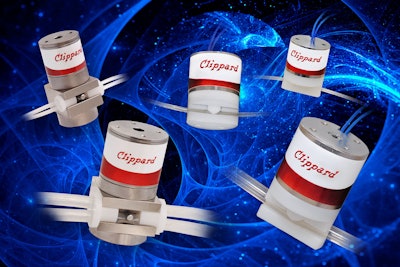
Other valve types have internal passages that may cause small amounts of fluid to remain in the valve. Pinch valves have no areas or dead volume where fluid can become trapped. Only the inside of the tubing contacts the fluid. Energizing the solenoid retracts or attracts the plunger, which opens or closes the tube. De-energizing the solenoid will allow the plunger to return to its original state.
Common industries that use pinch valves for the benefits of isolating fluid from a mechanical valve include: drug dispensing, laboratory equipment, waste water, medical devices, chemical, food and beverage equipment, ceramic/glass/plastic, and bulk and solids handling. Features include:
• Four sizes with multiple pressure range options to 30 psig
• Small, compact design
• Hygienic and easy to clean (replace tubes)
• Low power consumption
• High cycle life
• Can handle whole blood and particulate matter
• Unobstructed flow path
• Variety of medical/laboratory and food grade silicone tubing available
• Tubing is easily replaceable
For more information: http://www.clippard.com/link/pwld2167107

























